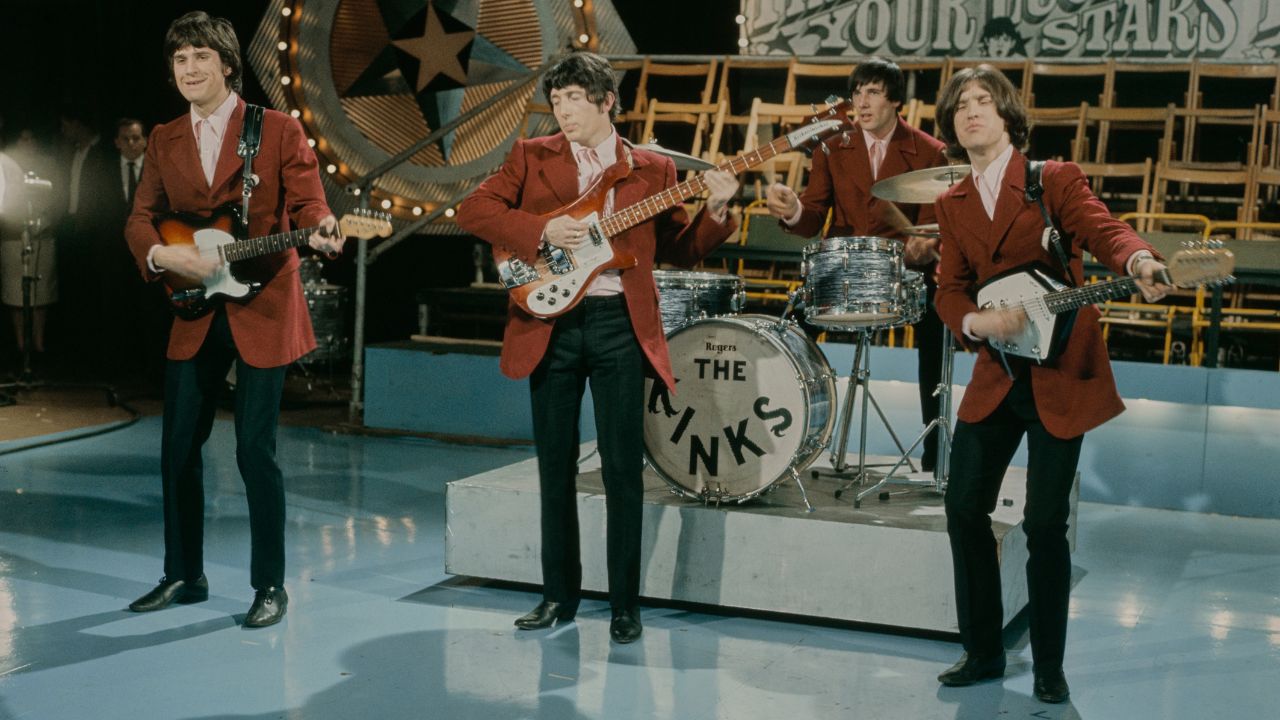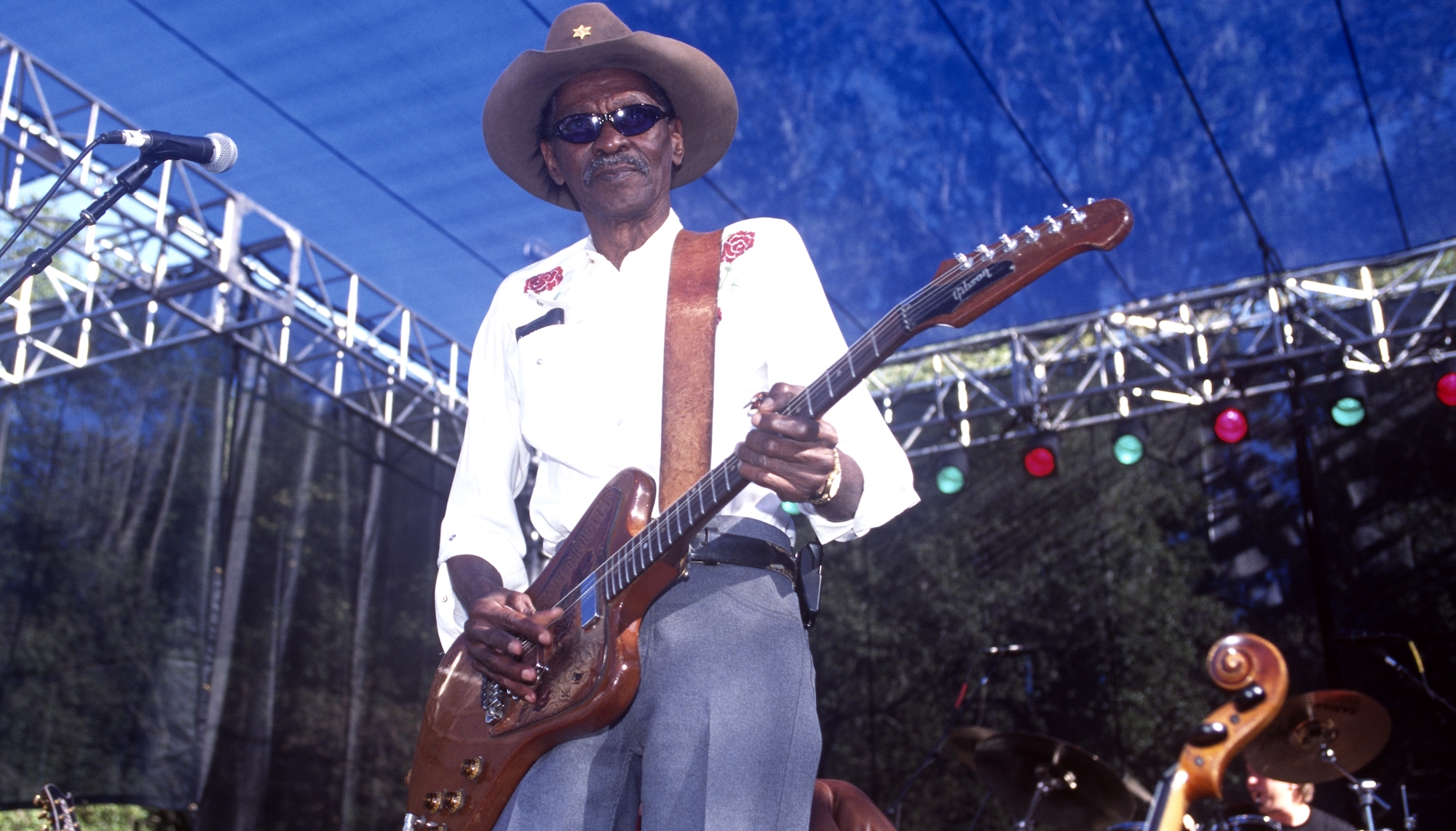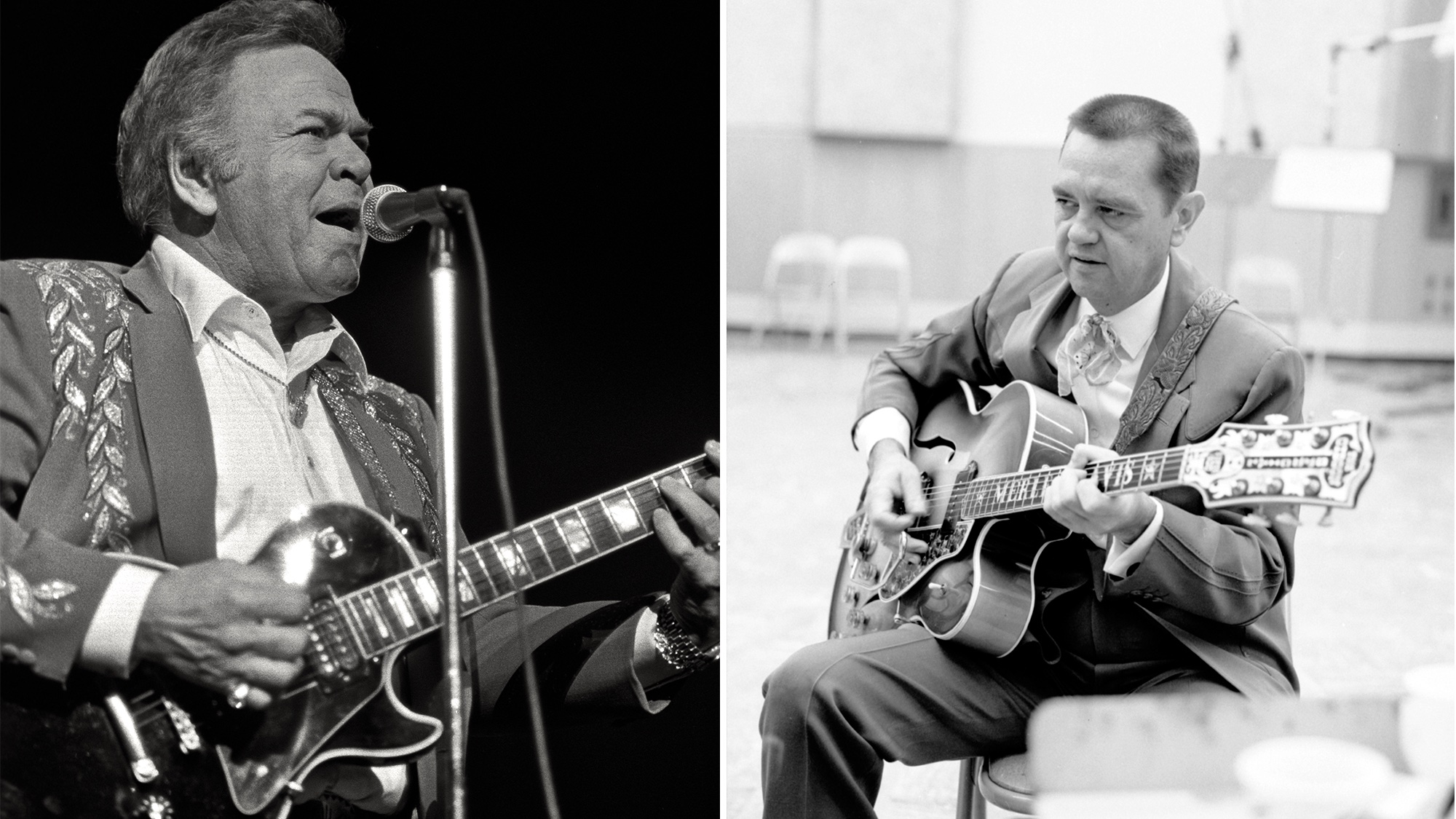10 recording mistakes every guitarist makes
Whether you’re recording at home or heading into the studio, these are the biggest recording blunders and how to avoid them
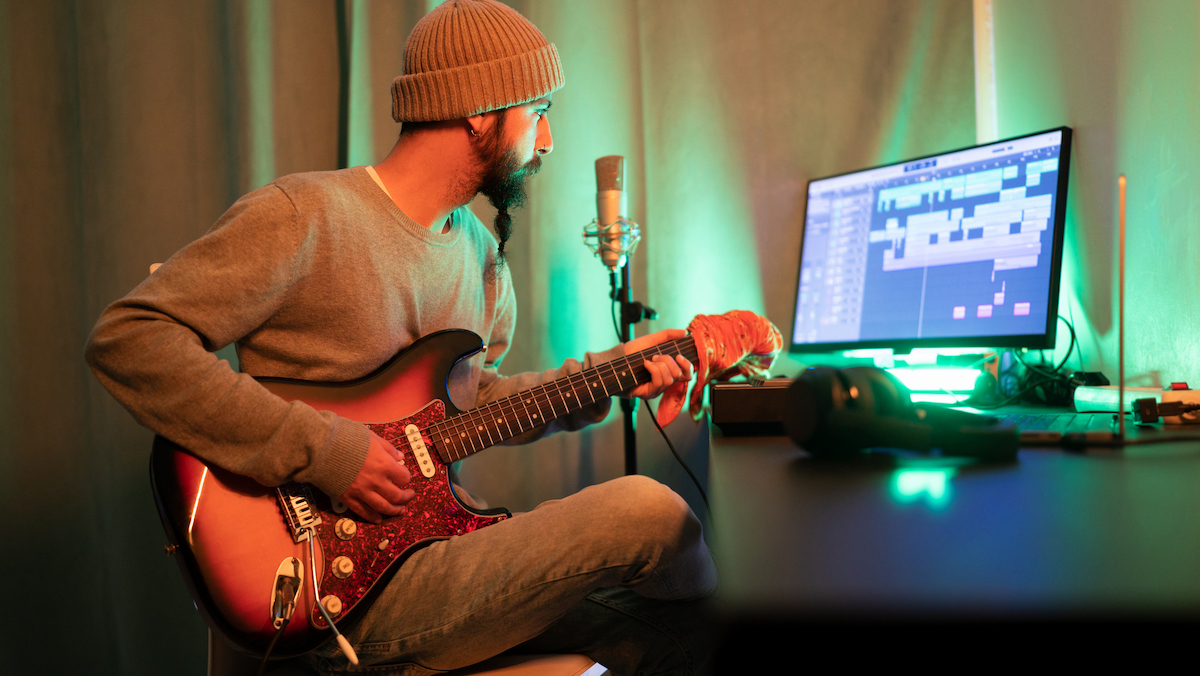
Recording your guitar parts can be a nerve-racking experience, even for players who’ve done it a million times. If you’re heading into the studio there are time constraints to think of, the leer of your bandmates as you fail to hit that tricky bend yet again, and the overall pressure of trying to nail a perfect take in front of other musicians.
Even when recording at home by yourself there’s the option paralysis of plugins and presets to think about, ensuring your composition is perfect, and setting your own time constraints so you actually get your songs finished. It’s a bit of a minefield to say the least, so to make things easier for you, we’ve put together a list of 10 common recording mistakes every guitarist makes to help ease you into your next recording project.
As a guitar player of over 20 years, I’ve done loads of studio sessions, and countless takes at home for freelance audio work and my own projects. I’m by no means the perfect guitarist, but I’ve learned a hell of a lot along the path of my own guitar journey. So allow my experience to lead you through any potential pitfalls in your next recording project, and ensure your upcoming recording session is a success.
- Our pick of the best laptops for music production and guitar recording
1. Rushing the composition
More than anything, the composition is the most important aspect of any recording. It doesn’t matter how expensive the gear you use, how incredible your sweep picking is, or the size of your pedalboard if the song itself sucks. More than any other part of the recording process, the composition is king.
Think about the technology available to famous musicians in the ’60s and ’70s versus what’s available to your average guitar player today. Those legends of guitar couldn’t even have dreamed of having the amount of resources available to us, and yet despite their technological disadvantage, songs from that era still ring true in the present.
That’s because a good song is a good song whether it’s recorded on a priceless Neve mixing desk or a free version of Cubase. You might be recording a three-chord earworm or a 15-minute prog metal epic, but the composition is what makes any recording truly great.
So, before you get down to properly recording your takes, make sure you’ve comprehensively demoed your song. Show it to your peers, strangers on forums online, or even your mum, and get their feedback. Analyze it in depth and think about where each part sits, whether it serves the song, and how you can improve by simplifying things or adding more to pad out the composition.
Get The Pick Newsletter
All the latest guitar news, interviews, lessons, reviews, deals and more, direct to your inbox!

2. Not practicing your parts
As an extension of our previous point, once you’re happy with your composition, you need to practice, practice, practice. Knowing every inch of your part, and the composition as a whole, is critical to ensuring top performance and is especially important if you’re going into the studio, as you’ll likely be on a time limit.
Of course, some aspects of your song will change in the studio, as that spark of inspiration to make a last-minute change or remove a part is always a possibility, but being totally prepared ahead of time is the mark of a professional. Being well-rehearsed is also a great way to cull any stage fright you might get when it’s your time to lay down a take.
Before I go into the studio I’ll spend at least two weeks recording my parts at home to a click track. By the time I actually get to recording the song I’ll be absolutely sick of it! But I’ll know every aspect of my own part and those of my bandmates, which will result in a smoother and less stressful experience for everyone.
This is just as important if you’re recording at home too, because not only will you save time on your project, but you’ll ensure a better final product if your takes are as slick as they can be. Practicing your parts ahead of time can also give you a lot of focus that a solo project will need, as many of us are guilty of falling into the trap of not knowing when a part is done and you should move on to the next.
3. Using brand new strings
You might think that using brand-new electric guitar strings on a recording is the right way to do things, and you’d be half right. Putting a fresh set of strings on will ensure there aren’t any intonation issues that often accompany old, dead strings, but what you don’t want is strings that are totally fresh. There are a couple of reasons for this, and they’re both tone and performance-related.
Before any recording, you’ll want to ‘bed’ the strings in. Taking away some of that new string ‘shininess’ will give you a better-recorded tone, because the ‘clank’ of new strings can end up sticking out a mile on the record. Giving them some use before you commit to your takes will give your guitar a more balanced tone that will sit better in the mix.
There’s a secondary purpose to this in that by playing your strings in a bit, it will give them a good stretch so they don’t go out of tune mid-take. We’d recommend changing a day or two before you go to record, but make sure you play them a good amount before you put your takes on track. By doing this you’ll get all the tone benefits of fresh strings, with optimal performance and stability too.
4. Forgetting to tune up after each take
This is something I learned the hard way. After absolutely nailing two takes of a complex guitar part with super tight accuracy when we got to the mixing phase we suddenly realized that one of them was out of tune. It’s a disheartening feeling knowing you’ll have to go back to it again, especially when it’s a complex part. so getting into the habit of tuning regularly will ensure you don’t encounter this painful feeling.
I tune before every single take, whether it’s an overdub of a small part or I’m going for a full 16 bars. The locking tuners on many of my guitars mean I’m hardly ever actually adjusting anything, but the painful memory of previous tuning mishaps is a strong reminder that it’s a worthwhile habit to get into. Ideally, you’ll have a dedicated guitar tuner you can run into, but a software tuner in your DAW will do the trick as well.
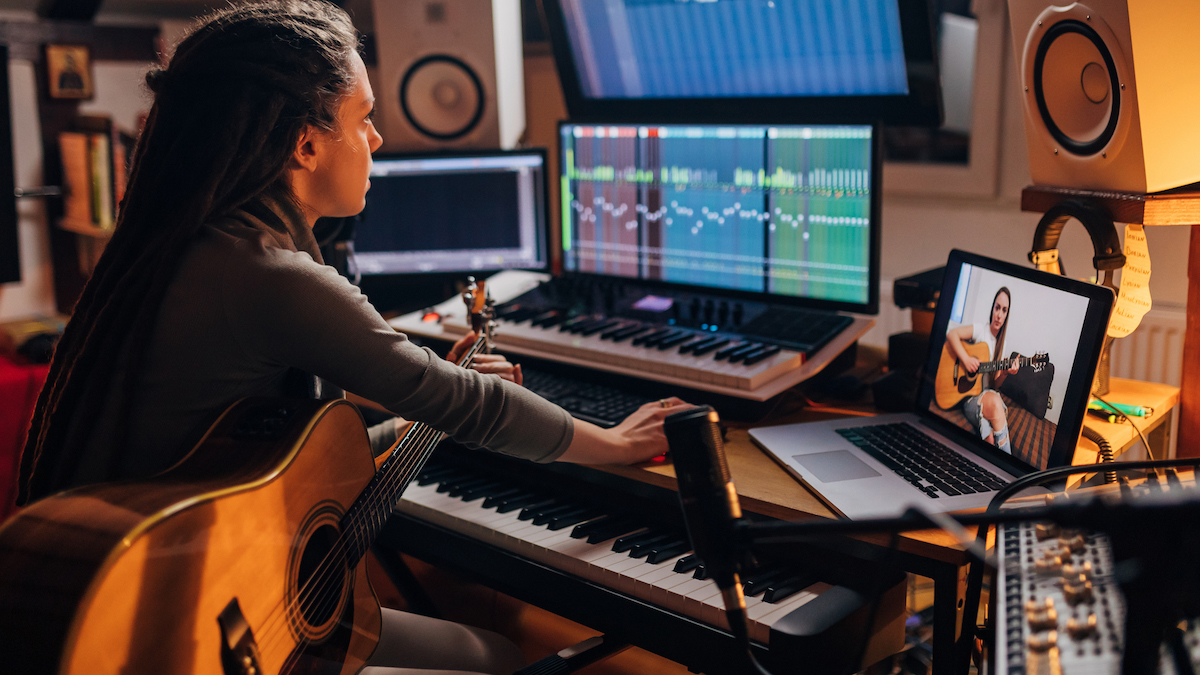
5. Poor gain staging
Moving on to more technical matters, gain staging is the process of optimizing your levels at each point of amplification to ensure the optimal signal level. In other words, it’s about getting the best sound possible. In a studio, your engineer should have the experience to take care of this, but when you’re recording at home, it’s a critical step in getting a great-sounding product.
To understand gain staging, let’s start with an analog signal path, like what you would find in a traditional recording studio. With your guitar amplifier, and particularly tube amps, you want it loud enough that you’re capturing the best possible sound, but not so loud that you’re overloading the microphone it’s going into. Conversely, you don’t want the amp so quiet that you pick up extra room noise, so you need to find the perfect balance between mic position and amp setting to get the best tone.
Once that’s set, you then need to repeat the process into your audio interface or any outboard gear that you have, ensuring that you have a loud enough signal that delivers a great sound, but not so loud that you get squaring off of the waveform, or ‘clipping’ as it’s more commonly known. It’s a balancing act that takes time, but trust us, it’s totally worth the effort.
Just because you’re recording digitally doesn’t mean the same rules don’t apply either. Your amp simulator will have an input and output level that can be set, so make sure it’s not clipping before it goes into your DAW. Any plugins that emulate compression, EQ or saturation need proper gain staging too, so take the time to set your levels and make sure you’ve got enough space to boost things later on if you need to.
6. Not getting it right at the source
I’ve made the mistake of recording a song with a purely DI guitar and adding my amp simulation onto the track later in the mixing phase. It doesn’t give you a great result. In a studio, an engineer will dial the best sound possible before committing to the takes, and if you’re recording at home, you should do the same.
The settings of your amp, pedals, and those on your guitar itself play a massive role in how you actually play your instrument. The way the strings react to the distortion, or how your notes play with your delay pedal’s repeats are all part of the language of your music and your distinctive voice in it.
When recording at home you’ve got a myriad of sounds available, so picking the right one for the job is something you should take your time over. One of the best things about recording with plugins is that you can always go back and change things if you want to, but you should be careful with trying to find the ‘perfect’ tone in isolation, and instead find something that serves the song and sits nicely in the context of the whole mix.
If you’re going into the studio, then honing in on your sound before you get there will save you time and prevent the back-and-forth of ‘let’s try this’ or ‘let’s try that’. Your engineer may ask you to tweak certain things on your amp or pedalboard but you’ll still want your core sound absolutely nailed before you go in, which will give you more time to experiment with additional sounds should you feel the need to.
7. Using too much distortion
Adding loads of distortion sounds fantastic in your bedroom, but on a recorded track it typically leads to an unfocused guitar sound. Many of the heaviest songs in existence were actually recorded with minimal distortion, as clarity and articulation are critical on guitar-heavy tracks. Many pro guitarists use far less distortion than you’d imagine, in fact, it’s their feel for rhythm and technique that makes tracks sound heavy or articulate.
Not only does too much distortion cloud your tone, but it also covers up deficiencies in your playing. By using less distortion, you’ll be forced to play far more cleanly, which will result in a better take with less string noise. If you really want to saturate things later on, just remember you can always add more distortion with plugins, but you can’t remove it if it’s there on your original take.
8. Not using a DI box
If you’re recording the analog route with a microphone on your amplifier, then we highly recommend investing in a good DI box to capture a clean signal of your take. It gives you more options when coming to the mixing phase, allowing you to use an amp simulator to create a tight double of your original sound or reamp the take entirely if you’re not happy with the sound you initially captured.
If you’re taking the home recording route, then you can still grab a DI when using an amp simulator, as you can simply copy your take to a new track and use a different setting to create doubles or run it through any other plugins you want to. Whilst physically laying down a second take is always better than copy-pasting, sometimes it’s not possible due to time constraints, and having a DI of your original take can end up being super handy if you find something isn’t working during the mix phase.

9. Relying on presets
Presets are great. Most amp simulations and plugins come with them but your favorite engineer doesn’t rely on presets. A preset is a fantastic starting point, but just because that ‘lead guitar’ EQ patch sounded great on Chris Lord-Alge’s mix, doesn’t mean it will do the job on yours.
Falling into the trap of relying on presets is something that happens to producers of all kinds of music, so you need to get into the headspace that a preset is a great place to start, but shouldn’t be used for the final product. You should be thinking about how the part is sitting with the drums, bass, vocals, and other instruments in your mix. Is it covering up that synth pad? Is it clashing with the hi-hat frequencies?
Don’t be afraid to tweak things to get it sounding right, and always have the overall picture of the song in the back of your mind. Sure, in isolation that crazy ring modulator patch sounds amazing, but ask yourself if it’s actually adding anything to the song.
10. Not using a reference track
This is one of the most important lessons in producing music of any form, not just for guitarists. Using a reference track from a similar genre is one of the best ways to make your song sound amazing, as it gives you a point of focus that prevents you from getting lost in making changes to your sound.
Find a high-quality version of your favorite band’s track on Bandcamp or Soundcloud and pull it into your mix, then once you’ve completed all your takes, A/B your mix with the great-sounding one you love. By comparing and contrasting the two, you can work out what your mix is missing compared to something done by a professional.
You won’t get it sounding exactly the same of course, but that’s not the point. By working this way you’ll be constantly refreshing your ears, giving you a focal point that prevents you going down the wrong path with your mix decisions. Having a few reference tracks in mind before you even start the recording process is a great way to get results when it comes to polishing the final project.
Gear up for the studio
- Best DAWs for guitarists: guitar-friendly music-making software
- Best guitar audio interfaces: top picks for every budget
- Best microphones for recording guitar: record acoustic and electric guitar

Matt is a Junior Deals Writer here at Guitar World. He regularly tests and reviews music gear with a focus on guitars, amps, pedals, modelers, and pretty much anything else guitar-related. Matt worked in music retail for 5 years at Dawsons Music and Northwest Guitars and has written for various music sites including MusicRadar, Guitar Player, Guitar.com, Ultimate Guitar, and Thomann’s t.blog. A regularly gigging guitarist with over 20 years of experience playing live and writing and recording in bands, he's performed everything from jazz to djent, gigging all over the country in more dingy venues than you can shake a drop-tuned guitar at.
“Chuck Berry's not a very good guitar player. He's a clown. He runs all over the guitar, just like any one of these old rock players would do, and makes no sense”: Clarence “Gatemouth” Brown pulled no punches when speaking about his fellow guitar heroes
“I said, ‘Merle, do you remember this?’ and I played him his song Sweet Bunch of Daisies. He said, ‘I remember it. I've never heard it played that good’”: When Roy Clark met his guitar hero
